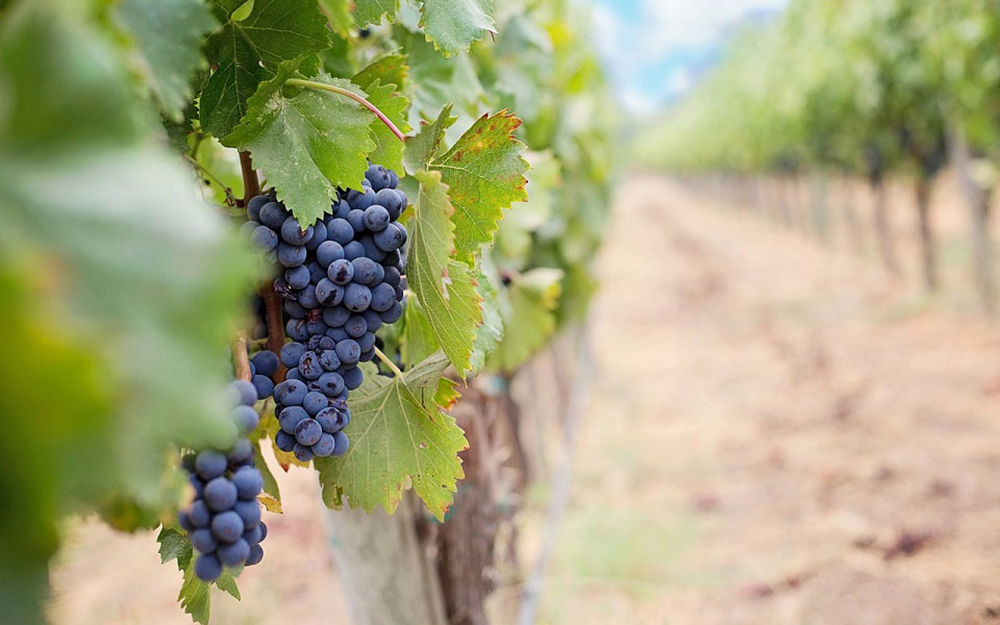By David Setley
of Passion Vines
“If it doesn’t happen in the vineyard, it can’t happen in the winery.” This expression, often heard at wineries around the world, summarizes the importance of terroir in the winemaking process. This week, I will discuss this frequently used wine term and then will offer recommendations of one wine varietal made in four distinct wine regions so that you may experience it for yourself: terroir is everything!
There is no single term in the English language that encapsulates everything the word “terroir” has come to mean. It was first used in France in the 13th century to refer to a territory or village, but by the 17th century, it meant land or soil. By the mid-20th century, the meaning of “terroir” evolved further to what is currently used in viticulture: a description of the total environment that impacts the quality and characteristics associated with the crops grown in that particular area. This includes the soil, climate, elevation, rainfall, temperatures, ambient flora and fauna, microbial life living in the soil, prevailing wind patterns, proximity to bodies of water, and anything else that could affect what grows there. Think of it this way: New Jersey, aka the Garden State, is famous for many crops, including blueberries. Did you know that Maine is also famous for its blueberries? I’ve enjoyed my share of Maine’s wild blueberries over my years of owning a home there. They are delicious but completely different from what we have here. Why? Terroir!
The concept of terroir, as it relates to wine, can be attributed to the Benedictine and Cistercian Monks of France who, as far back as the first century A.D., recognized that different parcels of land had characteristics that allowed certain varietals of grape to fare better than others. They were observant enough to notice that terroir could even be distinct between adjacent rows of vines. This became the basis for the appellation system, which identifies specific subregions that have been proven to produce particularly good wine of specific varietals within larger wine regions. Each country has its own designations. In the US, we call them AVA (American Viticulture Areas); in France it is AOP (Appellation d’Origine Protégée); in Italy it is DOC (Denominazione di Origine Controllata); and in Spain, it is DOP (Denominación de Origen Protegida). Each appellation has specific regulations for winemaking, including which grapes can be grown, growing seasons, harvest dates, fermentation, aging requirements and more. Most Old-World wine countries place more emphasis on the appellation from which wine came, rather than on the varietal itself.
To bring these concepts into your own glass, let’s look at how terroir affects just one varietal: Pinot Noir. Though Burgundy, France is considered to be the birthplace of Pinot Noir, it is actually grown in many countries and wine regions, including New Zealand, California, and Oregon. Whether you conduct a side-by-side with the recommendations I am about to give or select your own, you will certainly note the differences that terroir brings to the same grape.
For an example from Burgundy, reach for the Domaine Jessiaume Bourgogne 2021. Bourgogne is French for Burgundy. This producer is from Santenay in the Cote de Or, one of the premiere appellations of Burgundy. The soil of the region is known as Kimmeridgian limestone. This soil, along with the climate, environment and viticultural practices of the region, results in a wine with earthy flavor characteristics. The vineyard is located at approximately 46.5 degrees northern latitude, which is reflected by the wine being a medium-bodied red with low tannins and medium acidity with a uniquely earthy flavor profile with light notes of cherry fruit.
Compare the French Pinot with the Matua Pinot Noir from Marlborough, New Zealand. The soil of Marlborough is a combination of gravel, silt, sand, and clay. The vineyard is situated at approximately 41.5 degrees southern latitude, positioning it more than 300 miles closer to the equator. The average annual rainfall is higher and the average daily temperatures are a bit warmer, resulting in a slightly longer growing season. Although the Matua wine is still medium-bodied with relatively low tannins, the dominant flavor is more fruity (cherry and strawberry, specifically) and less earthy.
Pinot Noir is widely grown on the west coast of the U.S., specifically in Oregon and California. The Willamette Valley AVA of Oregon is home to the Montinore Estate Winery, an outstanding producer of Pinot Noir. This region’s soil is largely composed of volcanic flow, glacial deposits, and marine sediment. At 45 degrees northern latitude, the temperatures are similar to Burgundy, but the proximity to the ocean and the average annual rainfall are similar to New Zealand. The aroma and flavor profile of the Montinore Pinot Noir has notes of wild berries, plum, and chocolate, with hints of earthiness reminiscent of Burgundy wines. Compare this wine to the Truchard Pinot Noir from Napa Valley, California. At a latitude of about 38 degrees north, Napa Valley is situated closer to the equator than any other wine region discussed in this article and has warmer average daily temperatures. The soil is similar to that of the Willamette Valley. However, the growing season is longer. The resulting wine is more full-bodied and tannic, less acidic, and offers bolder aromas and flavors of plum and blackberry with only hints of earthiness.
So there you have it – one varietal, four distinct wines. Terroir is everything! I hope you enjoyed learning about one of the more complex concepts in winemaking. I urge you to explore the effect of terroir on other varietals the next time you head to the wine store. As always contact me with any questions at dsetley@passionvines.com. Until next time, happy wining!
David Setley is enjoying his retirement from higher education as a wine educator and certified sommelier at Passion Vines in Somers Point, New Jersey.







